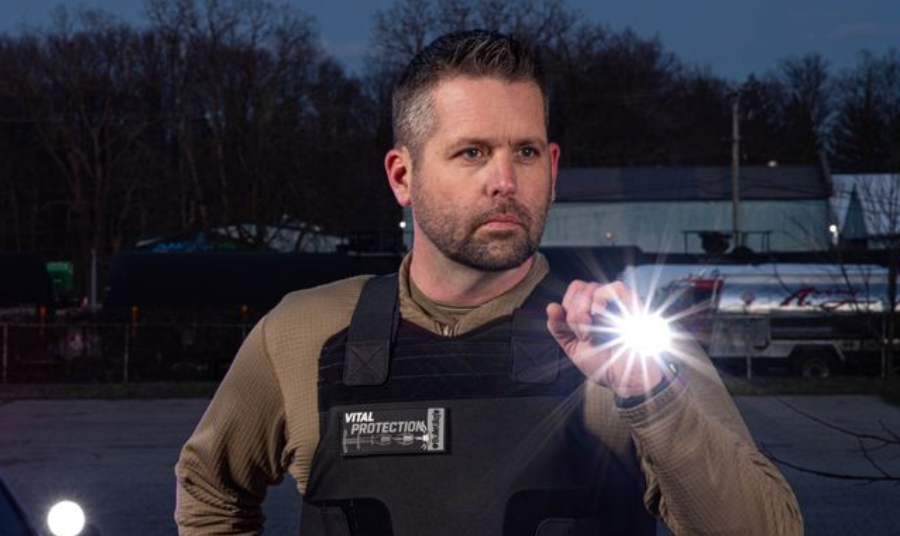Despite all the media’s hatred for the AR-15 in their crusade to paint it as the most violent, civilization destroying weapon since the atomic bomb, it is in fact the humble handgun that has been the cause of the most deaths in the United States. According to the FBI, the number of people murdered annually by rifles of any type since 2015 has never exceeded 500, meanwhile, the number of people killed by handguns averages over 6,000 per year.
Therefore, statistically, if you are in some type of work that involves defense of persons, property, or otherwise upholding the law, it is statistically more probable for you to get shot by a 9mm than by a 5.56 from an AR15. That’s only one of the reasons why wearing a soft armor vest is more practical for civilians than a plate carrier.
Mobility and comfort also factor into what type of body armor you should wear. 99.9% of the time, you will be going about your everyday business – walking, sitting, standing, and going to the bathroom. Would you rather be doing that in a heavy, rigid Level IV plate or flexible IIIA armor? Unlike a plate carrier, a soft armor vest allows you to bend your torso, which is great for picking things up, sitting at a desk, or otherwise moving around. Here are a few examples where having soft armor would be more beneficial than a hard plate carrier:
Security Guards
Event Security at Concerts or Festivals:
A security guard working at a crowded concert or festival needs to be mobile, agile, and able to move quickly through large crowds. A Level IIIA vest allows for better movement and less fatigue during long shifts, enabling the guard to respond to incidents, escort attendees, or assist in evacuations without being weighed down.
Retail Security:
In a retail environment, security personnel often need to blend in with customers while remaining prepared for potential threats. A Level IIIA vest can be worn discreetly under clothing, providing protection without alarming customers or making the guard appear overly militarized, which a Level IV plate carrier might do.
Nightclub Bouncer:
A bouncer at a nightclub may face the threat of handguns or knives but is unlikely to encounter rifle fire. Wearing a Level IIIA vest provides sufficient protection while maintaining a low profile. The flexibility of the vest allows the bouncer to engage with patrons and move freely in tight spaces, such as crowded dance floors.
Patrolling Office Buildings:
Security guards patrolling office buildings or other commercial properties need to move through stairwells, elevators, and narrow corridors. A IIIA vest provides protection against common threats while allowing guards to maneuver easily and remain comfortable during long shifts.
Civilians
Personal Protection in High-Crime Areas:
A civilian living or working in a high-crime neighborhood might choose to wear a IIIA vest for added protection against handgun threats. The lightweight and flexible design of the vest makes it practical for daily wear, whether while commuting, running errands, or walking to and from a parked car.
Home Defense During Civil Unrest:
In situations of civil unrest, a civilian might choose to wear a IIIA vest while staying at home or protecting their property. The vest offers protection against the most likely threats, such as stray bullets from handguns, while allowing the wearer to remain mobile and comfortable, unlike the cumbersome and restrictive Level IV plate carrier.
Community Patrol or Volunteer Security:
Civilians participating in neighborhood watch programs or volunteering for community security during events might opt for a IIIA vest. The vest provides a balance of protection and wearability, enabling them to patrol their community or monitor events without the bulk and visibility of a Level IV plate carrier.
Journalists Covering Protests or Unstable Situations:
Journalists often find themselves in unpredictable environments where handguns or blunt force threats are possible. A Level IIIA vest provides necessary protection while allowing them to move quickly and unobtrusively, gather information, and interact with crowds without the encumbrance of a heavy plate carrier.
In all these scenarios, the lightweight, flexible, and discreet nature of a Level IIIA vest makes it a more practical choice than a rigid Level IV plate carrier, which is more suited for military or high-risk tactical operations.
Frequently Asked Questions
1. Why is wearing a soft armor vest more practical for civilians than a plate carrier?
Statistically, handguns are the cause of more deaths in the United States than rifles. Soft armor vests provide better mobility and comfort for everyday activities.
2. What are some examples where having soft armor would be more beneficial than a hard plate carrier?
Examples include security guards at crowded events, retail security personnel, nightclub bouncers, security guards patrolling office buildings, and civilians in high-crime areas.
3. How does a Level IIIA vest enable better movement and less fatigue during long shifts?
A Level IIIA vest allows for better mobility and flexibility, reducing fatigue during long shifts for security personnel.
4. Why is it important for security guards to remain comfortable and able to maneuver easily?
Security guards need to move through various environments such as stairwells, elevators, and narrow corridors, which is easier with a flexible IIIA vest.
5. What type of protection does a Level IIIA vest offer against common threats?
A Level IIIA vest provides sufficient protection against handguns and knives, making it practical for everyday wear in high-crime areas.

